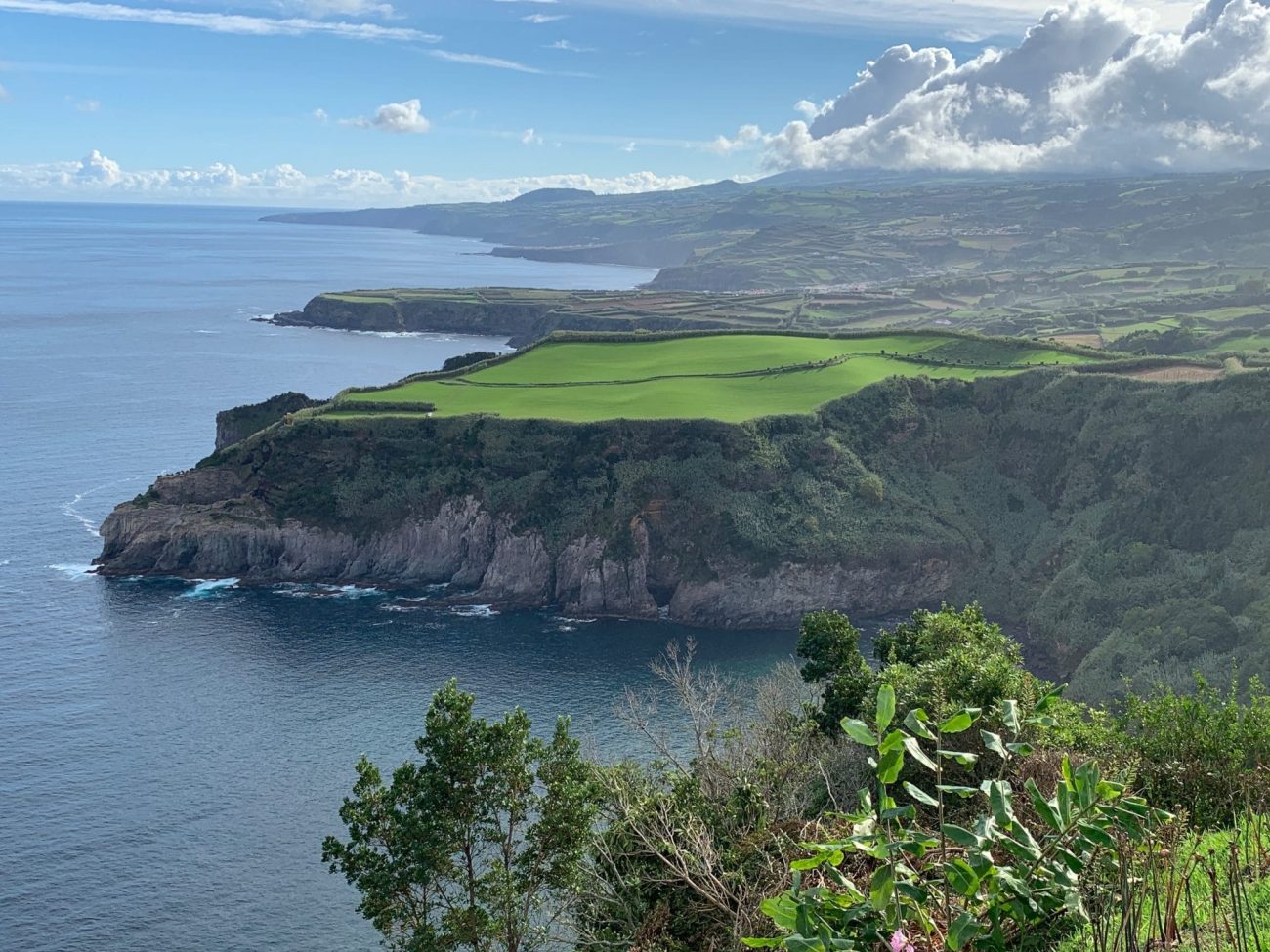“It’s a cross between Hawaii and Prague.” So says a fellow American traveler that I meet, about the Azores, an archipelago of nine islands situated a thousand miles off the coast of Portugal, in the middle of the Atlantic Ocean. Once considered the end of the known world, the islands eventually became a stopover for explorer voyages to the New World. That Age of Discovery endowed the islands with rich history.
Today its port cities and small villages remain steeped in colonial heritage, colorful architecture, and tales of silver and spices. Add a subtropical climate (like Bermuda eg) and amazingly lush, volcanic topography, and it’s no wonder the Azores are on the radar of travelers seeking a new discovery. Like many visitors, my itinerary includes two islands: the main one of Sao Miguel with its capital city of Ponta Delgada, and Terceira, an island that includes Angra do Heroismo (“Angra”), the Azores’ oldest city, dating back to 1534.
All Aboard
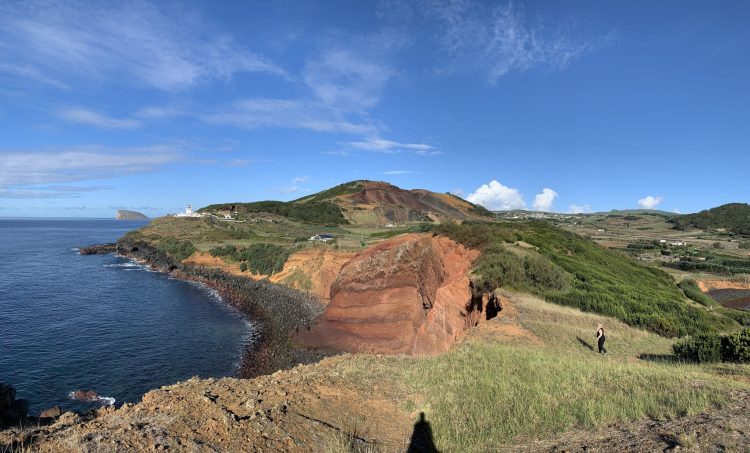
I board an evening Azores Airlines flight from Boston to Terceira and am just settling into sleep when the pilot announces we’re landing. I’m stunned to discover that my “overnight” flight to Europe is only four hours. At this rate, I figure, it’s quicker getting to a subtropical vacation in the Azores than flying from New York to the Caribbean. Also, the price is right in the Azores, with luxury hotels starting at just over US$100 per night.
Terceira’s main city of Angra twice served as the capital of Portugal. It’s a charming city. During the Age of Discovery, the city was considered a “window to the Atlantic,” as trade winds carried ships laden with riches through its port, Columbus and Vasco being among those who passed through. The city was heavily defended, a large 16th-century fortress still standing sentinel to that bygone era. Today Angra’s storied past make it a UNESCO World Heritage Site.
Discover History
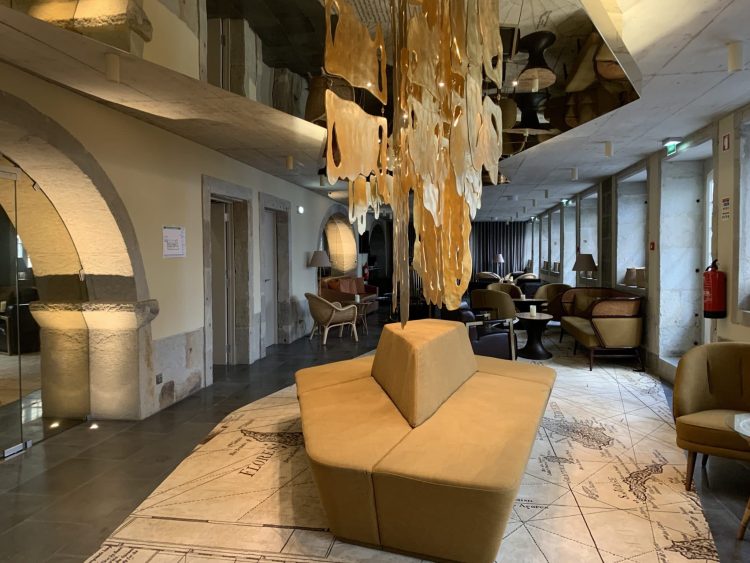
Discover some of the history at Zenite Boutique Hotel & Spa, a former manor house that is now a luxury, boutique hotel serving as my base in Angra. The four-star hotel is literally built upon old gold and silver coins found amid its original structures. Zenite, which opened in 2021, embraces its cultural heritage. The interior design channels the Age of Discovery, including stunning carpets that portray actual navigational maps from those days of exploration.
The hotel sits close to the town center. In fact, almost everything in Angra lies within easy walking distance along pretty, cobblestone streets. It takes only minutes to get from the city’s cathedral and main square to the pretty port from which popular whale-watching tours depart. I opt instead for a zodiac tour, heading to nearby volcanic islands that are barren but for birds above—among 40 resident species are in the area. As our boat navigates rock arches, the guide points out the clinging barnacles, cracas–an incredible delicacy found on local menus.
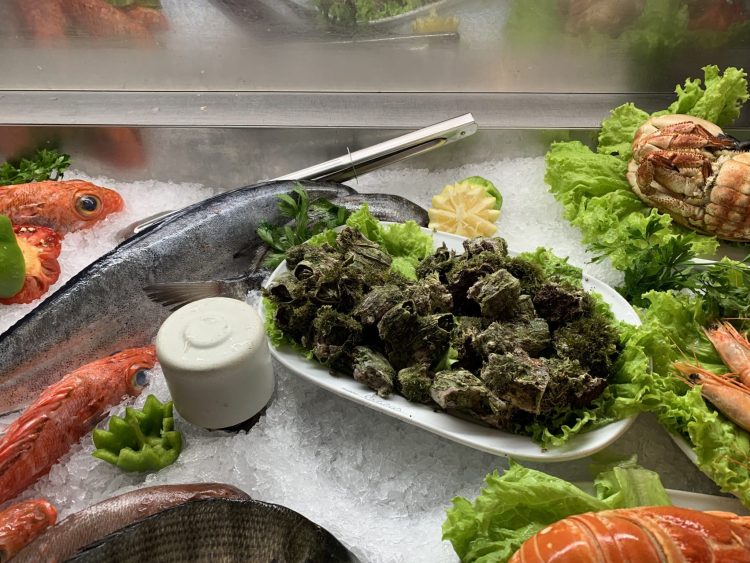
Volcanic Beauty
Back on dry land, I explore up into the volcanic hills of Terceira. I marvel at the tectonic plates that shifted millions of years ago causing the Azores to “pop up,” as my guide says, in the middle of the Atlantic. A Hawaii look alike, the remains of former volcanoes rise and fall like lush, undulating green waves across the landscape.
One intense volcanic eruption created Algar do Carvao, a cave that is, in reality, an empty volcano. It’s the most awe-inspiring cave I’ve ever seen. Sunlight streams through a conical opening on velvety-moss walls and golden interiors. Volcanic formations, in fact, form many natural highlights on Terceira. And, to wrap up my visit, in the village of Biscoitos I dip into natural ocean pools created by volcanic rocks, the Atlantic swirling gently around me.
Then it’s on to the island of Sao Miguel (San Miguel in English) and the Prague-like pulse of its bustling port city, Ponta Delgada.
European City Charm
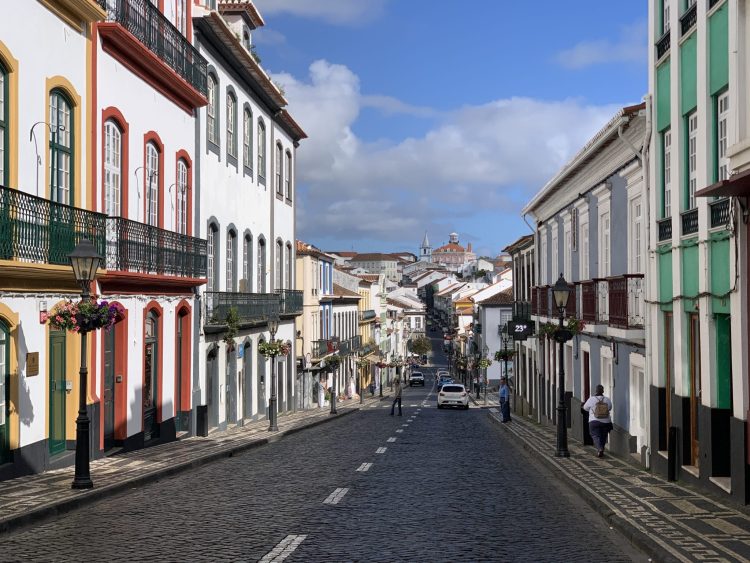
Ponta Delgada evokes the feel of a small European city. I discover winding streets, town squares, Baroque churches, arched walkways, and outdoor cafes. The city’s main avenue flanks the harbor where the occasional cruise ship berths. Here there’s a historic fort, which includes a military museum. Expansive in its memorabilia, it’s definitely worth the 3 Euros admittance price. Down the avenue is the grande dame of the Azores, the five-star Grand Hotel Azores Atlantico. Its interior design recalls visions of the golden days of oceanic cruising, with windows looking out to both sea and mountains.
I spend a relaxing day strolling city streets. But, as the beauty of the Azores lies in the exquisite vistas found in its rugged countryside, those mountains beckon again. A circuitous route takes me past a pineapple plantation that produces special pineapple liqueurs. Also popular is a liqueur infused with passion fruit that grows wild in the Azores.
But my goal is Sete Cidades (Seven Cities), on the western end of Sao Miguel. Here volcanic activity created lakes and craters magnificent to behold. Verdant mountains circle blue lagoons, and picturesque small villages dot the landscape. As I take in those vistas, at the snap of a finger, the weather turns from hot and humid to cold and rainy. “We have four seasons in a day,” my driver tells me.
Cooking with Natural Hot Springs
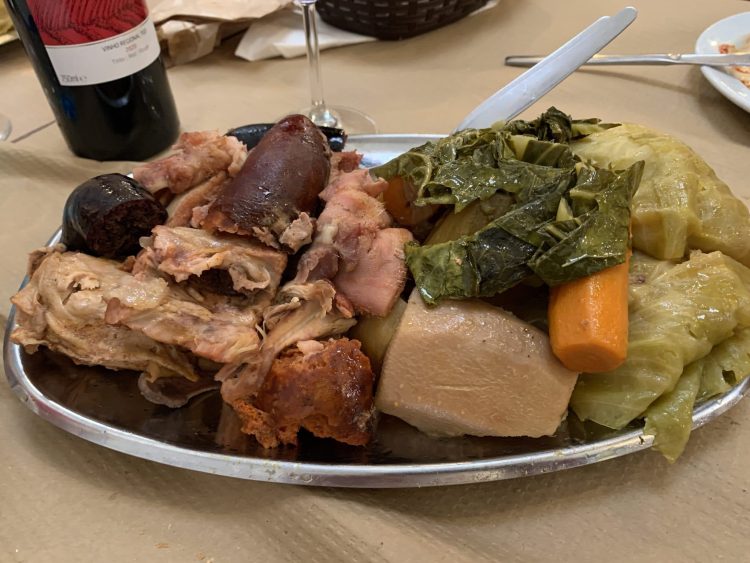
Fortunately, it’s sunny season when I head the next day eastward on Sao Miguel to the town of Furnas (furnace), known for its bubbling hot springs. I meet a gentleman from Boston who, as a kid, would visit his grandparents there. They’d head out on a picnic bringing a cast-iron pot filled with stew ingredients to a local who had dug a hole in the ground by the hot springs. Into it he’d place the pot. The grandparents then returned six hours later to retrieve it from its hiding place, savoring the delicious “cooked” stew. And that’s how local restaurants, like Tony’s, still do it today. “The special ingredient is the ground,” says Tony Arruda, third-generation owner of the restaurant. “Not cooked with water, just steam.”
So, after enjoying the vistas, and the daily midday ceremony to recover cooking clay pots, I indulge in the traditional Azorean feast at Tony’s—a stew of chicken, pork, beef, blood sausage, chorizo, sweet potatoes, and carrots, (codfish and tuna versions are also available). And with that, I wrap my Age of Discovery trip in the Azores, wondering how these intriguing islands had escaped me for so long.
[alert type=white]
How to Get There & Get Around
Azores Airlines flies non-stop from Boston to Terceira, with daily inter-island flights to Sao Miguel. www.azoresairlines.pt
Private cars are recommended for exploring. Rentals are available—for those not wary of winding roads. Or book through ZeniTravel, affiliated with Terceira’s Zenite Boutique Hotel & Spa. Custom private tours can be arranged at reasonable prices. www.zenitravel.com
Where to Stay
Terceira: Zenite Boutique Hotel & Spa is a four-star, small luxury hotel, transformed from a historic manor house, located steps from Angra’s town center and port. www.hotelzenite.com
Sao Miguel: Grand Hotel Azores Atlantico offers five-star luxury in Ponta Delgada with views of the old town and ocean. www.bensaudehotels.com
[/alert]

